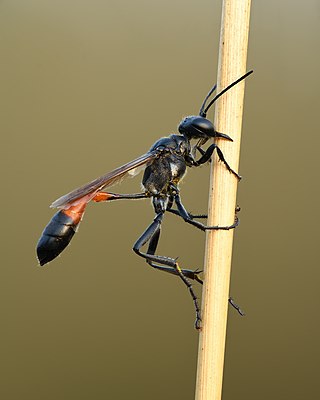
The Sphecidae are a cosmopolitan family of wasps of the suborder Apocrita that includes sand wasps, mud daubers, and other thread-waisted wasps.

Pison is a cosmopolitan genus of wasps within the family Crabronidae. The genus comprises 145 described species, although many species, especially in South America remain undescribed.
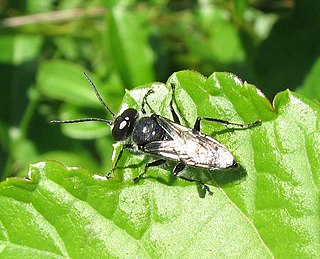
Astata is a cosmopolitan genus of solitary predatory wasps in the subfamily Astatinae. They are known to prey on adults and nymphs of Pentatomidae. Astata is the largest genus in this subfamily, and is identified by features of its wing venation. The males of this genus and the related genus Dryudella have very large compound eyes that broadly meet at the top of the head.
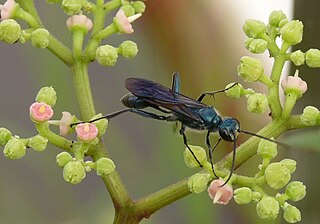
Chalybion is a genus of blue mud dauber wasps in the family Sphecidae. Chalybion species nest in a wide range of natural and artificial cavities such as holes in wood, walls, plant stems, etc., where they typically provision their brood cells with paralyzed spiders. They also reuse old nests of other wasps like Trypoxylon and Sceliphron.

Ammophila is the type genus of the subfamily Ammophilinae of the hunting wasp family Sphecidae. Ammophila is a large and cosmopolitan genus, with over 200 species, mostly occurring in the warmer regions of all continents apart from Antarctica.
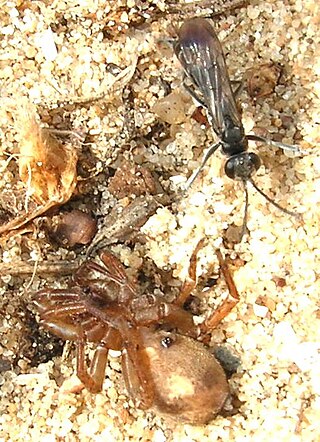
Pompilus is a genus of spider wasps in the family Pompilidae, the members of which prey on spiders. There are seven species recognised in Pompilus sensu stricto. It is the type genus of the family Pompilidae and the subfamily Pompilinae.
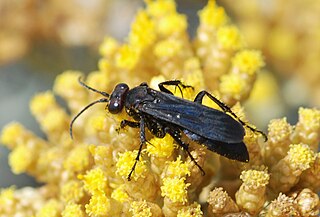
Agenioideus is a genus of spider wasps from the subfamily Pompilinae; the genus occurs in Europe, where 21 species are recorded, eastwards to Japan, in North America, South America, and Australia.

Chrysis is a very large genus of cuckoo wasps. It is the largest genus in the family, including over 1,000 species in over 20 subgenera, as speciose as all remaining Chrysididae combined. The generic name is derived from Greek chrysis, "gold vessel, gold-embroidered dress", and pays tribute to the brilliant metallic appearance of wasps in the genus.
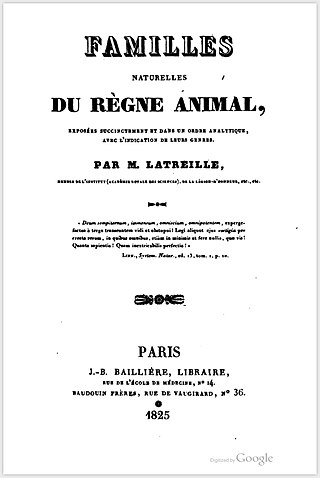
Tibicen is a historical genus name in the insect family Cicadidae that was originally published by P. A. Latreille in 1825 and formally made available in a translation by A. A. Berthold in 1827. The name was placed on the Official Index of Rejected and Invalid Generic Names in Zoology by the International Commission on Zoological Nomenclature in 2021. Certain European cicada species that were included by some authors in this genus at the time of its suppression are now listed under genus Lyristes Horváth, 1926. Other formerly-Tibicen species are placed in the tribe Cryptotympanini and include the genera Auritibicen Lee, 2015, Hadoa Moulds, 2015 Megatibicen Sanborn and Heath, 2016, and Neotibicen Hill and Moulds, 2015.
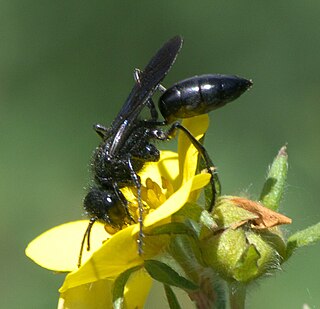
Podalonia is a genus of parasitoidal wasps in the family Sphecidae.

Prionyx is a genus of wasps in the family Sphecidae. They are known to hunt and feed on grasshoppers.

Oxybelus is a genus of wasps in the family Crabronidae. The species are found worldwide except in the Australasian realm. They are especially represented in the Palearctic. Oxybelus is the largest genus in Crabronidae, with 264 species known. Oxybelus wasps sometimes gravitate towards people, flying around travellers and landing on them, even when they are shooed away. It is not known why they do it, however it might possibly be them trying to drink sweat for its minerals.
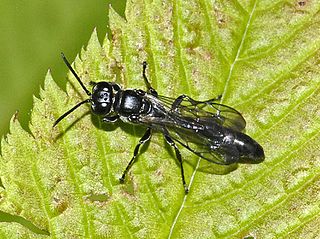
Trypoxylon is a genus of wasps in the family Crabronidae. All Trypoxylon species that have been studied so far are active hunters of spiders, which they paralyse with a venomous sting, to provide as food to their developing larvae. Depending on the species, they will either construct their own nest from mud or find cavities that already exist. These cavities can range from keyholes to nail holes to previously abandoned nests, and are generally sealed with mud to create cells for their larvae.
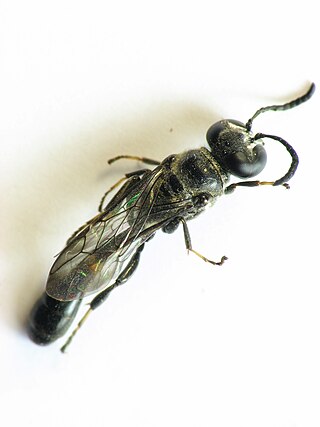
Trypoxylini is a tribe of traditional Sphecidae in the family Crabronidae. There are at least 840 described species in Trypoxylini.

Hoplisoides is a genus of sand wasps in the family Crabronidae. There are at least 70 described species in Hoplisoides.

Dolichurus is a genus of cockroach wasps in the family Ampulicidae; they are generally found on dead wood, leaf litter, or on tree trunks. There are at least 50 described species in Dolichurus.

Larrini is a tribe of square-headed wasps in the family Crabronidae. About 15 genera and more than 1,300 described species are placed in the Larrini.
















